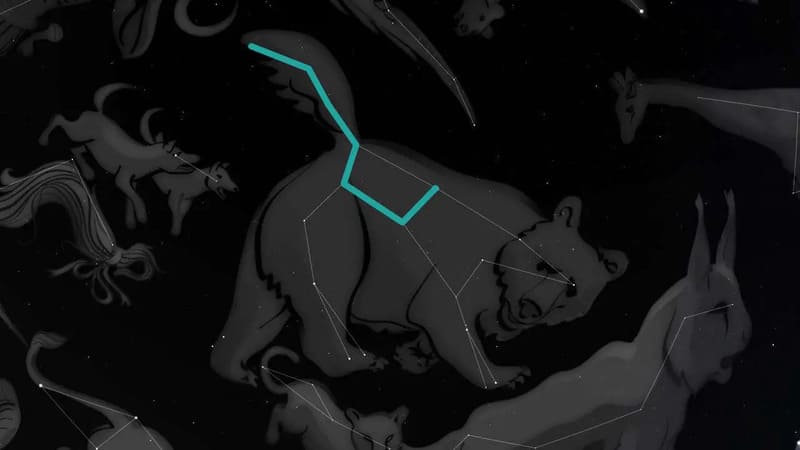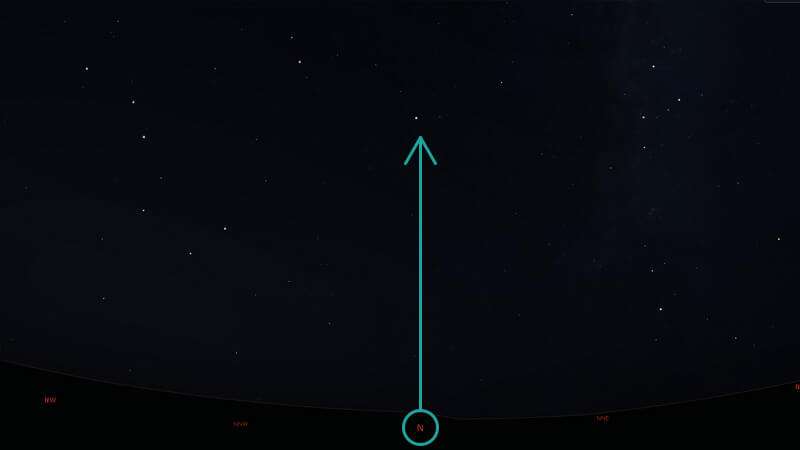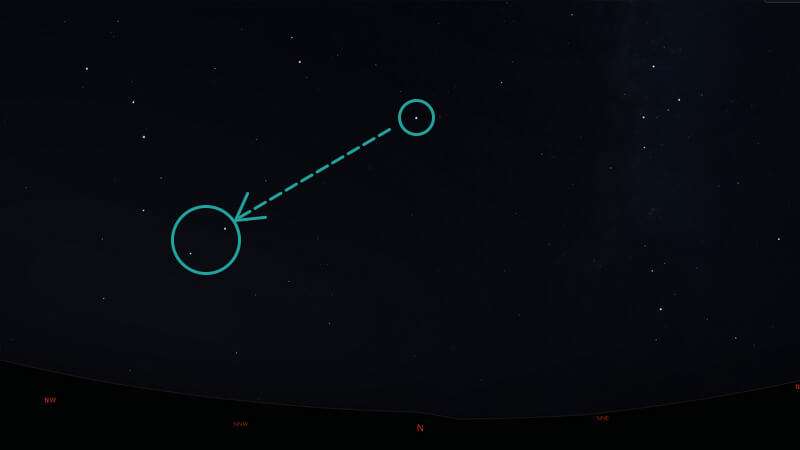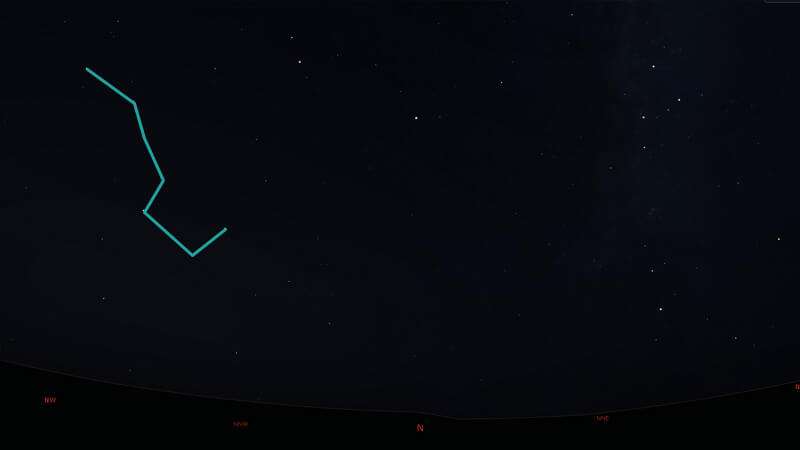Are you interested in stargazing in Utah? Are you looking for a guide to finding the Big Dipper? If so, this article is for you! But where is the Big Dipper in the Utah Sky?
The Big Dipper is in the Northern half of the Utah Sky. To find it, start by finding Polaris, the North Star. Polaris is a bright star about halfway up from the horizon. From there, search for two bright stars that line up with Polaris. These two bright stars form the end of the Big Dipper. The whole Big Dipper should now become visible to you.
In this article, you get
Information about the Big Dipper in the Utah sky
A detailed step-by-step guide for finding the Big Dipper
A look at how the Big Dipper’s position and orientation change throughout the year
An explanation of the seven stars that make up the Big Dipper
A brief review of some mythology about the Big Dipper
Examples of other constellations you can find in the Utah sky
By the end of this article, you’ll know where to look in the Utah sky to spot the Big Dipper and more.
Let’s dive right in.
Recommended For You
WHERE IS THE BIG DIPPER IN THE UTAH SKY?

Star gazing is a popular activity that allows individuals to appreciate the beauty of the universe.
The Big Dipper is a recognizable constellation that appears in the night sky.
This article provides information on locating the Big Dipper in the Utah sky, including the best times to view it and tips for star gazing. The article also explores other notable constellations in the Utah sky.
I aim to inspire you to explore the night sky.
WHAT IS THE BIG DIPPER?

The Big Dipper is a well-known constellation consisting of seven stars. It is also known as the Plough or the Great Bear.
In mythology, the stars of the Big Dipper represent a bear running from three hunters. The constellation is unique because its stars form a distinctive shape, making it easy to identify in the night sky.
The Big Dipper is also significant because it can be used as a guide to locate other stars and constellations.
Additionally, the two stars at the end of the Big Dipper point towards the North Star, Polaris.
Understanding the Big Dipper is a valuable tool for any stargazer.
HOW DO I FIND THE BIG DIPPER IN UTAH?

The first step in finding the Big Dipper is to find the North Star, Polaris. Follow these five steps to find the Big Dipper.
- Face directly North and look at the horizon. To help you find North, you can use a compass or a map. Your mobile phone probably has a compass, so activate that and use it to orient yourself so that you’re facing North.
- Look up about 45 degrees, halfway between the horizon and directly above you (the horizon is 0 degrees, and directly above you is 90 degrees)
- Polaris is a bright star directly North, halfway up in the Utah sky. Once you have identified Polaris, you can use it as a reference point to find the Big Dipper.

- Look around Polaris to find two bright stars that you could draw a line through from Polaris. These stars are known as “pointer stars,” and they point to Polaris. These two bright stars form the end of the bowl of the Big Dipper.
- Once you’ve located these two pointer stars, you should be able to identify the rest of the Big Dipper’s shape.

Ready for the good news?
You can find this asterism in Utah at any time of year.
It’s best to look for the Big Dipper with minimal light pollution during cloudless nights. Use a Utah Dark Sky Map to find a dark location.
LOCATING THE BIG DIPPER IN THE UTAH SKY THROUGHOUT THE SEASONS
The Big Dipper’s position and orientation change throughout the year due to the Earth’s rotation.
SPRING
In the spring, the Big Dipper rises in the northeast sky and sets in the northwest sky.
During this time, the constellation is high in the northern sky during the early evening, making it a great time to view it in Utah. The spring sky offers a clear view of the Big Dipper, making it easier to locate other stars and constellations.
SUMMER
During the summer, the Big Dipper is visible in the northwest sky. This time of year, the constellation is low in the northern sky and rises in the late evening.
FALL
In the fall, the Big Dipper rises in the northeast and sets in the northwest. During this time, the constellation is high in the sky during the early evening, making it easier to spot in Utah.
WINTER
In the winter, you can see the Big Dipper in the north-northwest sky. During this time, the constellation is low in the northern sky and rises in the late evening.
MYTHOLOGY AND CULTURAL SIGNIFICANCE
The Big Dipper has significance across different cultures and civilizations.
- In some cultures, the Big Dipper symbolizes good luck and fortune.
- In Greek mythology, the constellation comes with the story of the Titan Atlas and his daughter, the Pleiades.
- In Hindu mythology, the seven stars of the Big Dipper represent the seven sages.
- The Big Dipper is also an important symbol in Native American cultures and has been a navigational tool for centuries.
Today, the Big Dipper remains a significant and recognizable constellation, symbolizing our connection to the stars and the universe beyond.
EXPLORING THE UTAH SKY BEYOND THE BIG DIPPER
Once you have found the Big Dipper in the Utah sky, you can use it as a starting point for exploring other stars and constellations.
For example, looking back at Polaris, you have found the Little Dipper. Polaris is at the very end of the handle of the Little Dipper.
From there, you can find other constellations like Cassiopeia and Draco.
- Cassiopeia: This W-shaped constellation is visible in the northern sky year-round and is easy to identify.
- Draco the Dragon: This constellation appears as a long, looping shape and is visible in the northern sky during spring and summer.
- Taurus the Bull: This constellation can be seen in spring and fall and includes a red star, Aldebaran, and a bright V-shaped cluster.
- Orion the Hunter: This recognizable constellation appears in winter and is easy to spot due to its bright stars and distinct belt shape.
- Ursa Major: This constellation contains the Big Dipper and is visible year-round in the northern sky.
With practice, you can learn to identify all these constellations in Utah’s night sky and take your stargazing to a new level!
FREE STARGAZING CHECKLIST
My 5-page Stargazing Checklist will enhance your astronomical observations.
Follow this free checklist to navigate the night sky with confidence, clarity, and a sense of preparedness for a rewarding stargazing experience.

BRIGHT STARS IN THE BIG DIPPER
The Big Dipper asterism comprises seven bright stars:
- Dubhe: Dubhe is the northernmost star in the Big Dipper and forms the end of the handle. It is a bright, red giant star located approximately 123 light-years away.
- Merak: Merak is the southernmost star in the Big Dipper’s handle and forms the other end of the handle with Dubhe. It is a blue-white giant star located approximately 79 light-years away.
- Phecda: Phecda is one of the stars in the bowl of the Big Dipper and is near the bottom of the bowl. It is a giant yellow star located approximately 89 light-years away.
- Megrez: Megrez is the star connecting the bowl to the handle of the Big Dipper. It is a white dwarf star located approximately 80 light-years away.
- Alioth: Alioth is one of the three stars forming the handle of the Big Dipper. It is a giant white star located approximately 81 light-years away.
- Mizar: Mizar is located in the middle of the handle of the Big Dipper and is the second-brightest star in the constellation. It is a binary star composed of two giant white stars.
- Alkaid: Alkaid is the last star in the handle of the Big Dipper and is at the end of the handle, opposite Dubhe. It is a blue-white star located approximately 103 light-years away.
All of these stars have been visible since ancient times and have been used to tell time and navigate during night voyages.
The stars in the Big Dipper are relatively close to each other in terms of astronomical distances, making it a great starting point for exploring the night sky.
SUMMARY
Thank you for reading my article “Where is the Big Dipper in the Utah Sky?”
The Big Dipper is easy to spot if you’re facing North and have a clear view of Polaris, the North Star.
The Big Dipper is a circumpolar constellation, meaning it never sets below the horizon and is visible year-round from Utah.
Consider reading my other Utah articles about Can you see the Milky Way at Zion?, Is Bryce Canyon Good for Stargazing?, and Stargazing Arches National Park.




